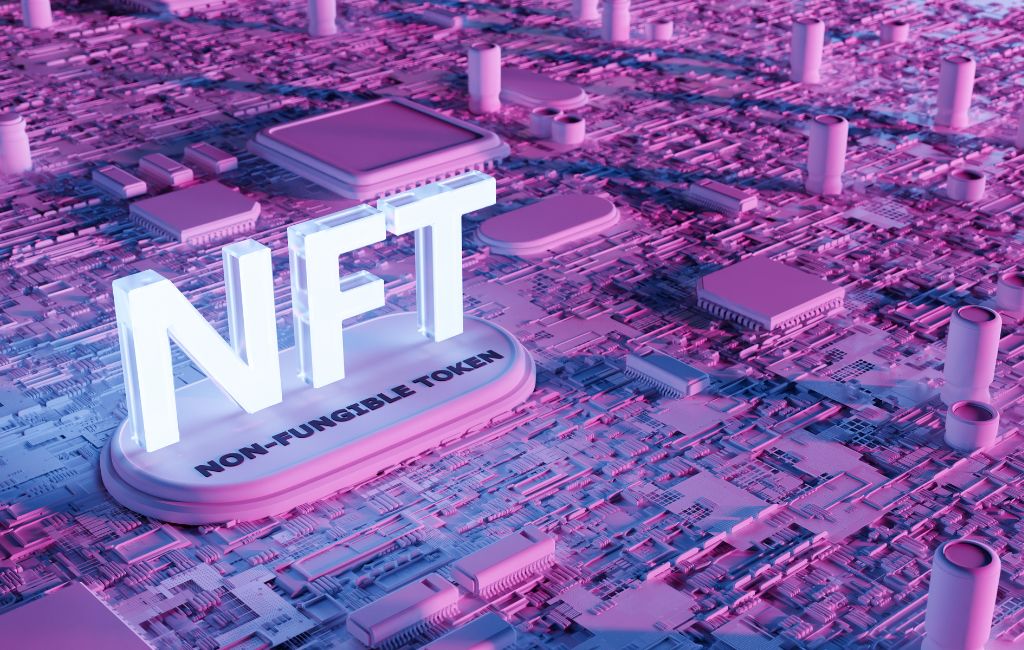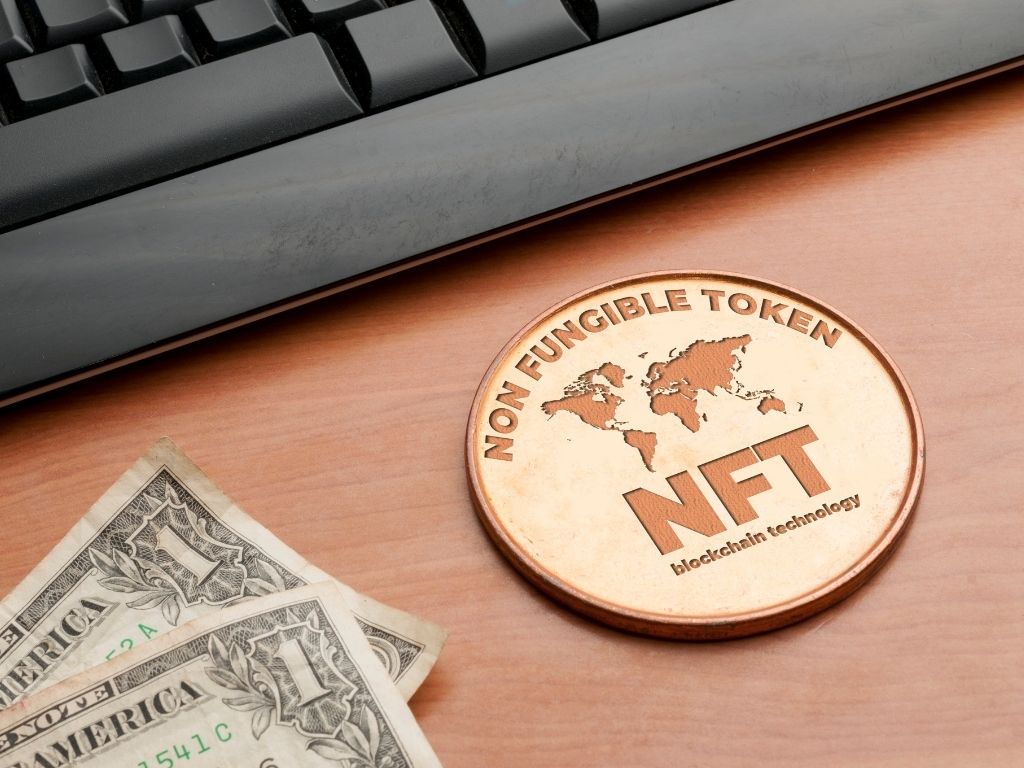NFTs Are Going To Be More Than Art Tokens In Coming Time
What will you learn if you stop people on the street and inquire about non-fungible tokens (NFT)? Something about outrageous fees for cartoons of monkeys and maybe regarding Twitter profile images. Confused, mumbling about cryptocurrency. A few well-known faces. “Bubble” is the term. In conclusion, a story of frivolity, glitz, and unreasonable ecstasy. Which isn’t wholly off-base. NFTs can and will mean much more than art tokens, though. They already do if you look beneath the surface.
Many are doubting the viability of NFTs as a technology and a cultural movement as their market value, and popularity have fallen. What use, after all, do NFTs serve? Were they just speculative assets bound to evaporate once the NFT-market bubble burst? The Initiative for CryptoCurrencies and Contracts is co-directed by Cornell Tech professor Ari Juels in New York (IC3). He also serves as Chainlink Labs’ principal scientist. In addition to coordinating the launch of an NFT exhibition in New York City in October, he recently co-authored a paper on NFTs titled “NFTs for Art and Collectibles: Primer and Outlook.”
It’s true that most NFT artists aren’t exactly Rembrandt, but at least one is Damien Hirst. However, the purpose of aesthetic or collectible NFTs today isn’tisn’t really to be useful. In the end, isn’t the standard by which we assess the importance of tangible works of art by Rembrandt or Damien Hirst, musical compositions by Mozart or The Beatles, or opulent items like Fabergé eggs or Birkin bags.
The idea of NFTs as a new medium for creating collectibles and art is crucial. Technology advancements, such as the invention of oil paints, the electric guitar, and photography, have permanently altered how art is created and displayed. NFTs are part of this long arc of history. A thriving community is exploring its expressive potential through art created by machine learning, art that changes as its surroundings do, community-driven artistic production, and much more. Moreover, NFTs also can, and increasingly will have utility other than being art tokens. NFTs, for instance, can aid in resolving important issues in conventional art markets. Among those are provenance and royalty payments.
Provenance
Former Metropolitan Museum director Thomas Hoving calculated that around 40% of the items he examined—many of which were found in the museum—were forgeries, fakes, or misidentified original works. It’sIt’s obvious that issues exist in traditional art markets even though many contests this statistic and even the classification of fakes.
Numerous issues involve provenance, the timeline of an artwork’s creation, and subsequent owners. A piece of an artist’s provenance can be used to determine its worth and authenticity. When it’sit’s absent, unpleasant surprises can occur, such as Steven Spielberg discovering that he had a stolen Norman Rockwell painting or the Getty Museum shelling out $10 million for an allegedly fake ancient Greek statue.
Provenance is permanently recorded on a blockchain using NFTs. As indicated by blockchain addresses, ownership is transparent to the public and hard to forge. Strong provenance can also help address a few other pervasive issues in the art market, like money laundering, by making bids and identities transparent.
Also Read: What Are NFTs To Christos Makridis, COO Of Living Opera ?
Royalties
There are innumerable tales of artists like Vincent van Gogh, who passed away without achieving fame. These occurrences remind us of how frequently artists are treated unfairly by the art marketplace. It is remarkable that, despite widespread overseas practice, they typically do not receive royalties for sales of their works in secondary marketplaces in the United States. Famously, Robert Rauschenberg attended the Sotheby’sSotheby’s auction, where his painting “Thaw,” which a collector had purchased from the artist for $900, sold for $85,000. Rauschenberg shouted at the collector; I’ve been working my tail off only for you to make that profit.
NFTs allow for the automatic enforcement of royalty payments (although some poor technical choices have created loopholes). Perhaps more importantly, artists can, in principle, propose a set of future terms for selling their works. For instance, a creator may decide that she never wants her NFT to sell for more than $1,000. Alternatively, she might decide that she wants to exercise a legal right similar to France’sFrance’s Droit d’auteur, which gives creators some continued ownership over their creations even after they are sold. In rare situations, they can even destroy them. While some consumers could object to the level of power that NFT developers have, the openness of blockchain systems can guarantee that everyone can make an informed decision.
Issues and possible solutions
The NFT markets are rife with issues. Illegal copying is widespread. The same goes for wash trading, which creates false trade activity to stimulate sales. It can be difficult to stop the deterioration of tangible works of art, like sharks preserved in formaldehyde. The same issue exists in digital form with NFTs. The archival integrity of the NFT ecosystem could turn out to be a ticking time bomb, as many NFTs have content that is saved with paid cloud services and could disappear if payment expires.
Another important difficulty is the entrance of bots. NFTs are frequently sold as drops or as a collection of thousands of NFTs available for purchase at once. Schemers frequently use bots to acquire NFTs during a popular dip to resell them for a profit afterward. It has been difficult to impose a fair cap on purchases made by each customer.
Thankfully, blockchain systems are developing to allow people to offer unique identities and confirm facts about themselves while maintaining their anonymity. For instance, my Cornell Tech group raffled off a digital artist’s NFT. We set up the raffle so that each participant could only get one raffle ticket (for free) by utilizing privacy-preserving oracle technology to show us they had a Social Security number.
The decentralized identification notion is a wide one that the blockchain community is aiming toward. In essence, this is a user-controlled credential system that protects privacy. Imagine having a digital copy of your driver’s license that you could use to prove some facts about yourself online, like that you live in California but hide your birthdate. Implementing purchase limitations and other features by NFT marketplaces will be possible via a decentralized identity system. One NFT artist, for instance, informed my group that he would like to be able to automatically give discounts to other artists. Currently, there is no efficient way to accomplish this, but it will be possible in a decentralized identity system that certifies artists.
A robust identity management system can also aid in ensuring consumers purchase NFTs from authentic producers rather than fraudsters who sell them for art tokens.
NFT markets may eventually feature a ” policy engine” that allows producers to control the lifespan of their works in a wide range of ways. They may impose terms on sales and resales. Their NFTs can be made dynamic. Fans may receive discounts and incentives from them. Similar to how galleries work to develop devotees in conventional art markets, they can do the same in the realm of NFTs. The fun-eroding “speculative pricing and investment attitude” that prompted the Microsoft (MSFT)-owned video game Minecraft to restrict NFTs earlier this year is maybe another issue that a policy engine can help with.
Past digital art
The human population is moving online and becoming increasingly engrossed in visual and digital experiences known as the metaverse. Young adults are letting go of their material goods. Many technologists think NFTs will eventually come to stand in for things in the metaverse, including everything from land parcels to magical swords. They will influence how we interact with the metaverse, whatever form it takes. The recent integration of NFTs into Instagram by Facebook, which recently changed its name to Meta (META) to reflect the emergence of the metaverse, is not a coincidence.
NFTs can be used for a wide range of other things, including the representation of real-world goods. An apartment was sold as an NFT, which may signify things to come in the real estate market. They are used or issued by well-known businesses like Nike (NKE), TIME Magazine, and Tiffany & Co. (TIF). They also provide a platform for an event ticketing system richer in experience elements.
Don’t be misled. For all of their potential, NFTs are not an unalloyed force for good. Nobody should defend the excesses they’ve encouraged, including new crimes like artist identity theft and fraudulent sales like those found in some cryptocurrency exchanges. These factors make technology techniques like those discussed here and community-based consumer protection measures crucial.
In any event, NFTs will keep developing in intriguing and potent new ways. They, or something like that, are a cultural force that will never disappear, whether you like it or not.
Stay informed with daily updates from Blockchain Magazine on Google News. Click here to follow us and mark as favorite: [Blockchain Magazine on Google News].
Get Blockchain Insights In Inbox
Stay ahead of the curve with expert analysis and market updates.
latest from tech
Disclaimer: Any post shared by a third-party agency are sponsored and Blockchain Magazine has no views on any such posts. The views and opinions expressed in this post are those of the clients and do not necessarily reflect the official policy or position of Blockchain Magazine. The information provided in this post is for informational purposes only and should not be considered as financial, investment, or professional advice. Blockchain Magazine does not endorse or promote any specific products, services, or companies mentioned in this posts. Readers are encouraged to conduct their own research and consult with a qualified professional before making any financial decisions. The featured image used is just a creative depiction of the title and it does not intend to hurt sentiments of any person or institution. If it hurts anyone sentiments, please do not hesitate to reach out to Blockchain Magazine.

 Bitcoin
Bitcoin  Ethereum
Ethereum  XRP
XRP  Tether
Tether  Solana
Solana  Dogecoin
Dogecoin  USDC
USDC  Cardano
Cardano  Lido Staked Ether
Lido Staked Ether  TRON
TRON  Chainlink
Chainlink  Avalanche
Avalanche  Sui
Sui  Wrapped stETH
Wrapped stETH  Wrapped Bitcoin
Wrapped Bitcoin  Stellar
Stellar  Toncoin
Toncoin  Hedera
Hedera  Shiba Inu
Shiba Inu  WETH
WETH  Polkadot
Polkadot  Litecoin
Litecoin  LEO Token
LEO Token  Bitcoin Cash
Bitcoin Cash  Bitget Token
Bitget Token  Official Trump
Official Trump  Uniswap
Uniswap  Hyperliquid
Hyperliquid  Pepe
Pepe  Wrapped eETH
Wrapped eETH  USDS
USDS  NEAR Protocol
NEAR Protocol  Ethena USDe
Ethena USDe  Aave
Aave  Aptos
Aptos  Internet Computer
Internet Computer  Ondo
Ondo  Ethereum Classic
Ethereum Classic  WhiteBIT Coin
WhiteBIT Coin  Monero
Monero  POL (ex-MATIC)
POL (ex-MATIC)  Cronos
Cronos  Render
Render  Mantle
Mantle  Algorand
Algorand  Dai
Dai  OKB
OKB  MANTRA
MANTRA 




